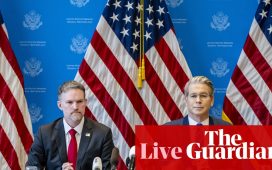
Sri Lanka is poised to secure a second $330 million installment from the International Monetary Fund (IMF) before the end of the year, as part of ongoing efforts to stabilize its economy after declaring bankruptcy over an $83 billion debt. Central Bank Governor Nandalal Weerasinghe expressed confidence on Friday about receiving the funds following a series of economic challenges and reforms.
The country has been grappling with severe financial difficulties, which culminated in a dramatic bankruptcy declaration in April 2022. The situation led to essential services being disrupted, but recent developments indicate that these services have now been restored. Despite these improvements, higher taxes introduced as part of the recovery strategy have sparked public dissent.
In September, the IMF emphasized the need for Sri Lanka to enhance its tax administration to aid in its economic recovery. This recommendation came after the country had already received initial capital from the IMF following a March agreement. The disbursement was part of a broader $2.9 billion bailout package aimed at addressing critical supply gaps and supporting structural reforms.
The financial collapse last year not only strained Sri Lanka’s economy but also led to significant political upheaval, with protests forcing President Gotabaya Rajapaksa to step down. In the aftermath, China’s Export–Import Bank agreed to financial terms that are necessary for securing additional Official Creditors Committee (OCC) creditor approvals, which are crucial for the continuation of the IMF bailout program.
As Sri Lanka awaits further disbursement, there is growing anticipation that continued support from international partners like the IMF will help bolster its economic stability and prevent future lapses in oversight and debt management. The government’s commitment to reforming its tax system is seen as a key step towards ensuring long-term fiscal sustainability and regaining the confidence of both domestic and international stakeholders.
This article was generated with the support of AI and reviewed by an editor. For more information see our T&C.







